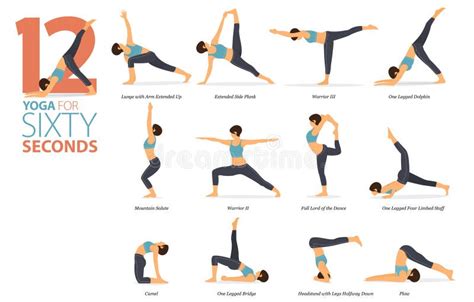Understanding the Rich History of Yoga: From Ancient Roots to Modern Evolution
Yoga, a practice deeply rooted in ancient tradition, has evolved over thousands of years to become a globally popular discipline for mental, physical, and spiritual well-being. From its origins in ancient India to its contemporary practice, yoga reflects a complex interplay of history, philosophy, and cultural transformation. This article takes a closer look at yoga’s journey through time, exploring its historical context, key concepts, and practical applications today. We’ll delve into misconceptions, analyze its development, and discuss future research and challenges facing the discipline.
Introduction
Yoga is much more than a fitness regimen—it is an ancient practice that integrates physical postures (asanas), breathing exercises (pranayama), and meditative techniques designed to balance body, mind, and spirit. Although it is now practiced by millions worldwide, its origins date back over 5,000 years to the Indus Valley civilization. By examining the rich historical background of yoga, we gain a deeper understanding of its purpose and its ongoing relevance in today’s society.
Key Concepts of Yoga
To understand yoga in its entirety, we must first grasp its core concepts, which have remained central to the practice despite its diverse evolution. Here are the most fundamental aspects:
- Asana: Refers to the physical postures or poses in yoga, meant to promote physical health and mental focus.
- Pranayama: Breath control exercises, fundamental to regulating life force or “prana” within the body.
- Dhyana: Meditation or focus of the mind, one of the eight limbs of yoga as described by Patanjali.
- Yamas and Niyamas: Ethical guidelines for living a moral life, involving self-discipline and social behavior.
- Samadhi: A state of intense concentration achieved through meditation, which leads to a union with the divine or ultimate reality.
Historical Context
The origins of yoga are often traced back to the Indus Valley Civilization (circa 2500 BCE), where archeologists discovered figures in meditative postures. Over time, yoga’s philosophical and spiritual foundations were laid out in the sacred texts of the Vedas, Upanishads, and the Bhagavad Gita. During this time, yoga was seen as a path to enlightenment, a tool for transcending the physical world and attaining spiritual liberation.
Key Historical Phases in Yoga’s Evolution:
| Time Period | Development |
|---|---|
| Indus Valley Civilization | Earliest archeological evidence of yoga-like practices. |
| Vedic Period (1500–500 BCE) | Foundational spiritual texts describe the concepts of meditation and sacrifice, laying the groundwork for later yogic philosophies. |
| Classical Period (500 BCE–800 CE) | The Yoga Sutras of Patanjali codified the philosophy of yoga, focusing on mental discipline and ethics. |
| Medieval Period (800–1700 CE) | Tantra and Hatha Yoga emerged, placing more emphasis on the body, rituals, and energy control. |
| Modern Period (19th–20th Century) | Yoga began to spread globally, largely through the work of figures like Swami Vivekananda and Tirumalai Krishnamacharya. Hatha yoga gained prominence as the dominant form. |
Current State of Yoga
Today, yoga is a global phenomenon, practiced by millions of people across various forms. It has morphed into several distinct styles such as Ashtanga, Bikram, Vinyasa, and Kundalini, each with a unique focus on physical and mental well-being. The commercialization of yoga, especially in Western countries, has led to a shift from its spiritual roots toward fitness and wellness. However, this shift has also sparked debates about cultural appropriation and the loss of yoga’s deeper philosophical essence.
Practical Applications of Yoga
Yoga offers a wide range of benefits that cater to both physical and mental health. Here are some of the most significant applications:
- Stress relief and relaxation techniques.
- Improved flexibility, strength, and posture.
- Reduction in symptoms of anxiety and depression.
- Enhanced respiratory and cardiovascular functions.
- Mindfulness and increased focus.
Case Studies
To illustrate the profound impact of yoga, we can examine several case studies:
- Yoga for PTSD Relief: A study conducted on war veterans found that regular yoga practice significantly reduced symptoms of post-traumatic stress disorder (PTSD), improving their emotional regulation and resilience.
- Yoga in Schools: Introducing yoga as part of the curriculum in several schools has led to improved student behavior, concentration, and stress management.
- Corporate Wellness Programs: Large companies like Google have incorporated yoga sessions into their employee wellness initiatives, leading to improved workplace productivity and reduced burnout.
Stakeholder Analysis
Yoga’s rise has implications for a diverse range of stakeholders:
- Health professionals: Medical practitioners increasingly recommend yoga for its therapeutic benefits.
- Yoga instructors: The rapid growth of the industry offers economic opportunities, but also challenges around regulation and maintaining standards.
- Religious communities: Some traditionalists are concerned that yoga’s spiritual essence is being diluted in its modern forms.
Implementation Guidelines
For those looking to introduce or deepen their yoga practice, here are some key steps to follow:
- Start with guided sessions led by certified instructors to ensure proper technique and avoid injury.
- Practice regularly to experience the cumulative benefits of yoga.
- Incorporate both physical postures and mindfulness techniques for a holistic experience.
- Consider different yoga styles to find one that fits your physical and mental needs.
- Make use of props (blocks, straps) to support beginners in mastering poses safely.
Ethical Considerations in Modern Yoga
With the commercial rise of yoga, ethical issues have emerged:
- Cultural appropriation: Some argue that modern yoga, especially in the West, has detached from its spiritual origins, focusing solely on the physical aspect.
- Exploitation of teachers: Yoga instructors often work in poorly regulated environments with little job security.
- Inclusivity: Many yoga classes are financially inaccessible to marginalized communities, leading to a form of exclusivity within the practice.
Limitations and Future Research
Despite its many benefits, there are still areas where yoga research is lacking:
- Clinical studies: More large-scale, longitudinal studies are needed to validate the therapeutic effects of yoga on specific medical conditions.
- Injury prevention: As yoga becomes more physically demanding in modern styles, research into injury rates and prevention strategies is critical.
- Cultural respect: Further exploration is needed into how yoga can be practiced globally without losing respect for its cultural and spiritual roots.
Expert Commentary
Yoga continues to evolve, but the debate remains whether this evolution preserves or distorts its ancient roots. Scholars, practitioners, and yogis alike must strike a balance between innovation and tradition. Yoga offers valuable tools for self-care, yet how it is taught and disseminated plays a crucial role in maintaining its integrity. Moving forward, we must ensure yoga remains inclusive, accessible, and true to its foundational teachings while adapting to the modern world.








